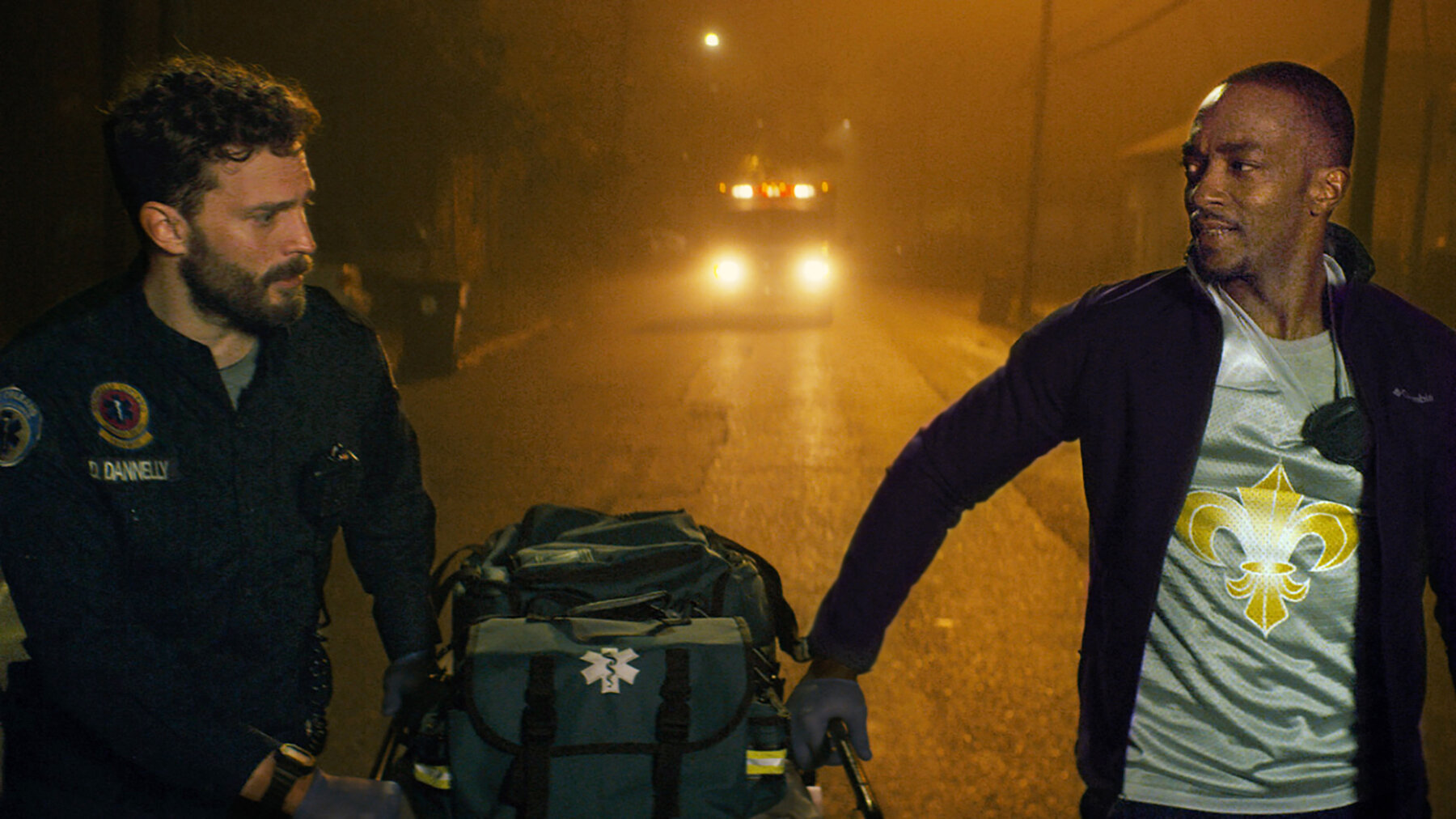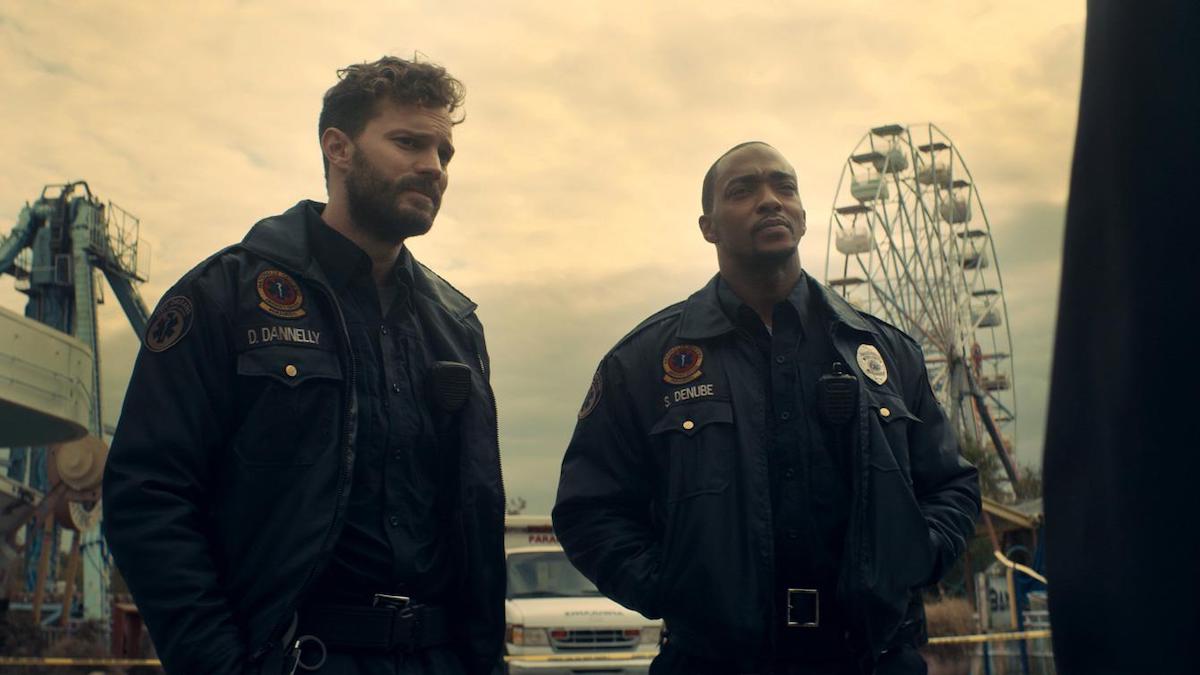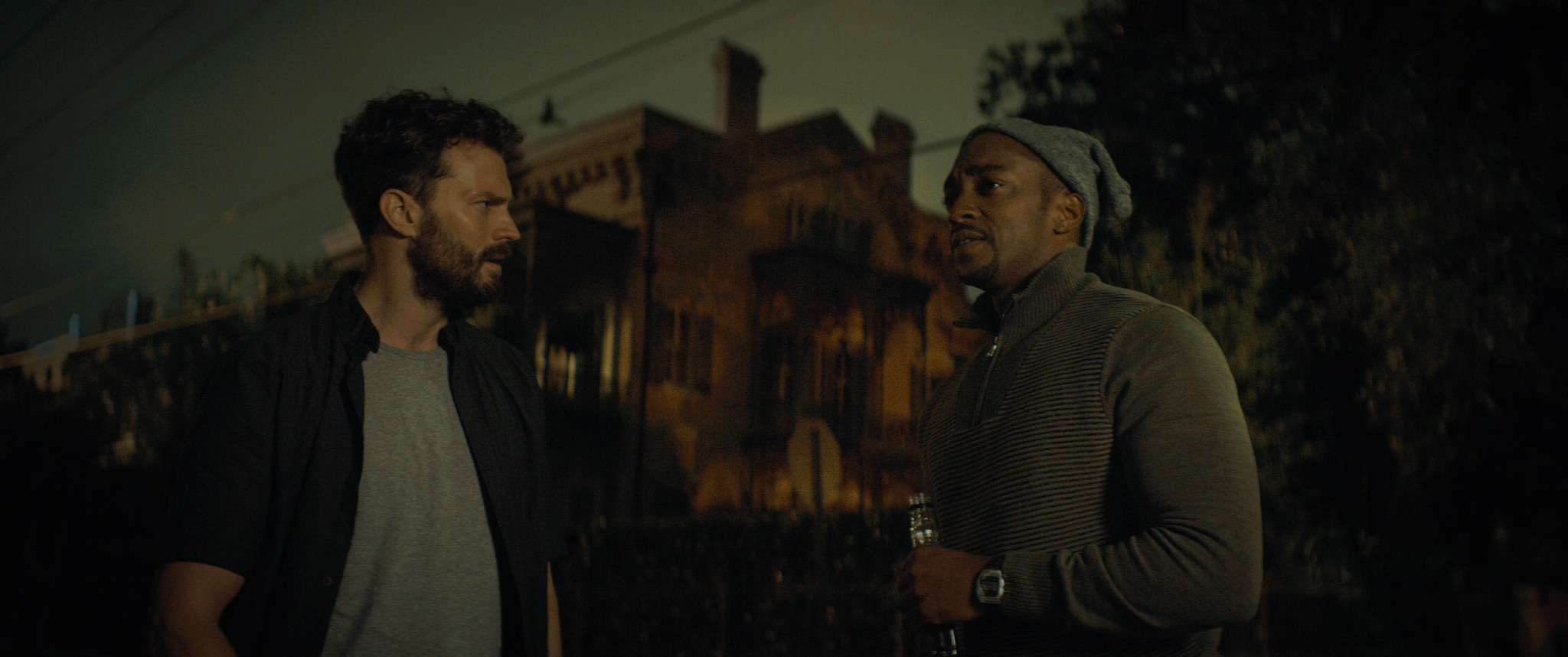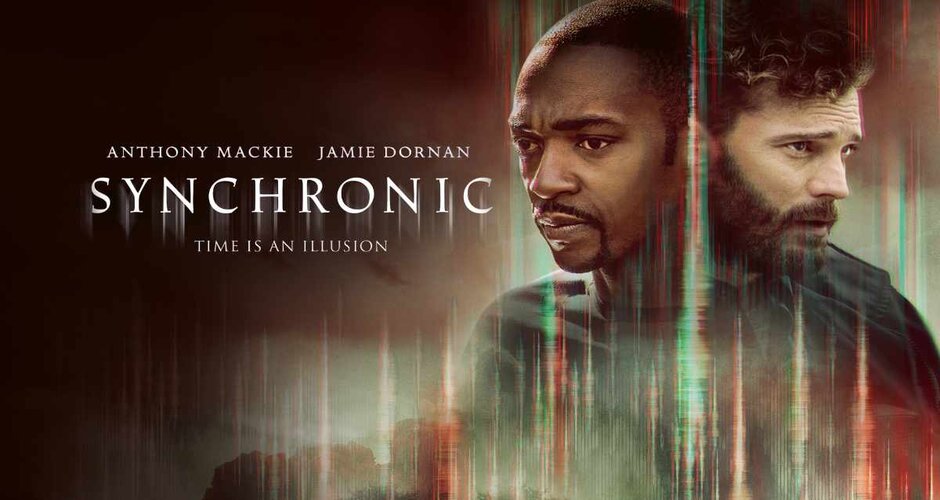Perhaps the most alluring aspect of time travel is the idea that if you went back, things would be simpler. You’d find yourself transported to a more innocent time, an era without the complications of everyday modern life. Whether it’s the comfort of the 1950’s of Back to the Future or the inherent silliness of every age, as presented in Bill and Ted’s Excellent Adventure. The present is infuriating and the future is unknown, so it’s the past that we all cling to. Sure, we’re all aware of the inherent dangers of travelling back to the past—the ‘butterfly effect’ and all that—and we’re also aware of the backwards ideas and dangerous lifestyles of days gone by. But we don’t care much do we? We think that if we had the power to travel through time, we would find the right era, live in peace, and perhaps even change things for the better. Which is why Justin Benson and Aaron Moorhead’s Synchronic, a movie that literally has its main character scream, “the past f***ing sucks”, is such a refreshing change of pace for a well worn staple of the sci-fi genre.
Benson and Moorhead have been carving out a small niche for themselves for close to ten years now. They specialize in high concept, low budget genre films that are far more interested in character dynamics than any of the zany ideas their films are supposedly focused on. Their first film, Resolution, was a deeply sad portrait of two former best friends struggling to come to terms with their lives and choices. It was just disguised as a mystical and cult heavy horror film. Their sophomore effort, Spring, used the horror genre to explore the pitfalls and wonders of modern relationships. It remains their masterpiece. Their third film, The Endless, was a wild and trippy ride through a series of time loops that was mainly interested in helping two brothers come to terms with their past. They are humanistic genre filmmakers; guys who have a clear idea and understanding of how sick humanity is but also want to believe that people can get better. Unlike a lot of horror and sci-fi and thriller directors, they don’t leave hope off the table. In fact, hope seems to be the thing they are most interested in.

And now here they are with Synchronic, their first film with a decent budget and well-known actors. Anthony Mackie and Jamie Dornan star as a pair of New Orleans paramedics who have been best friends since middle school and who stumble upon a series of gruesome deaths that all appear to be connected to a designer drug. When we first meet them, they are complaining about an ambulance driver who dropped them off at the wrong address. Mackie is hung-over and has forgotten to wear his uniform. Dornan scolds him for it, but not without affection. The performances and dialogue evoke a natural rapport and history between these two men. We understand their dynamic instantly and it feels lived in. Then two patrolmen arrive on the scene and one of them mistakes Mackie for a culprit, shrugging off his mistake by saying, “hey, you show up to work dressed like Tupac, what do you expect to happen?” We see the rage in Mackie’s face at such an aggression and in Dornan’s too. They’ve been through this sad routine before, but both of them seem to not want to rail against it, only to move on.
We learn more about them both. Dornan is married with children, though they are separated by 18 years. His baby daughter has just been born and his 18 year old, Brianna, has that disaffected look that so many teenagers seem to cling to like a lifeboat. She likes Mackie, thinks of him as the cool uncle, even though his life is spiral of alcoholism and one night stands. We don’t learn much about Dornan’s relationship with his wife (Kate Aselton, wonderful as always) but we get the sense that they were young lovers who got stuck together and have somehow found a way to make that work. Or maybe not. Dornan and Mackie share many scenes together where they rail about their past and their regrets, each believing the other to be ‘the lucky one’. These scenes, like so much of Benson and Moorhead’s work, have a raw quality that overcomes the often on the nose dialogue. These guys like actors and are more than happy to let them go off in order to create scenes that feel truthful and well observed. When Mackie nurses a headache in the ambulance while Dornan practices his golf game, we get the sense that this scene has played out over a thousand times.
Of course, it wouldn’t be a Benson and Moorhead film without a heavy genre element and this is where we get into minor spoiler territory. Read no further if you want to go in unscathed—though my headline kinda gives the game away.

Basically, Mackie discovers that this designer drug, called Synchronic naturally, is essentially a pill that allows the taker to travel backwards in time. The rules of this are explained, in the movie’s only clumsy scene, by the man who invented the pill and now wants to destroy it. But none of that really matters. As Mackie says directly to the camera at one point, “It’s a time travel pill”. That’s all you need to know. While a movie like Tenet bends forwards and backwards (no pun intended) to explain the insane and illogical rules of its time travel plot to no discernible end, Synchronic simply says, “here’s a pill that allows you to travel through time” and lets you figure out the rules on your own . It’s a movie that doesn’t treat you like an idiot and lets you go on this wild ride without alienating you from the characters and the dire situations they find themselves in.
About those dire situations: this is frequently a very devastating movie. It is easily the darkest work of these two filmmakers despite the fact that it is always exuberant, exciting, heartfelt, and also very funny. There’s an unpleasant sadness that hangs around every frame of this film and though the message is ultimately upbeat, some viewers may find it too hard to accept. There’s an anger and sense of loss to this film that is not present in their other work. Much of that comes from the idea that a white man would be able to travel through time without impediment while a black man would find struggle and horror everywhere he goes. As Mackie travels, he discovers (even though he probably always knew) that the warm nostalgia of Back to the Future is misplaced at best and woefully incorrect most of the time. The past is not kind to man of his color. And my god it’s wonderful for a movie, in this age where nostalgia is king, to stick a sharp fork right into the very eye of that idea while making a deeply topical and important point abut race.

The performances are exemplary. Mackie and Dornan are two actors I have largely been indifferent on. That’s not to say I’ve never liked them; I’ve just always kind of “nothinged” them. Dornan was fine in The Fall and bad in the Fifty Shades movies. Mackie has been in some interesting stuff but he’s mostly known for his MCU work and I’ve found his presence there largely underwhelming. Here, these two guys rise to the occasion. There are two scenes that transcendent; one where they both scream all their resentment at each other (the way only long term friends can) and another where they reconcile and confess deep secrets (the way only long term friends can). Both scenes are so well written and performed one has to wonder what it would be like if Benson and Moorhead just made a straight drama. They have the ear for it.
But they don’t seem to want to do that. They like using the fantastical as a way of exploring human relationships and I love them for that. They are also directors who are clearly deeply in love with their locations, and not in an obnoxious way. There’s a wonderful scene where Dornan and his daughter play Basketball in an outdoor pavilion and then the camera pulls back to give us a full panoramic view of the whole landscape. It’s beautiful and also demonstrably not present just because they liked the shot. It’s there to remind us of how these people live and what they see every day. It grounds us in their world. Benson is credited as the writer and Moorhead as the cinematographer. Any studio would be lucky to pick them up for either task.

There’s one more interesting element about Synchronic and it is perhaps the most potent and moving thing about it. Yes, it’s a movie that thinks nostalgia is poison. Yes, it’s a movie that thinks nearly all other time travel movies have their heads firmly up their butts. Yes, it’s a movie that hates the past. But it doesn’t hate your past. It doesn’t hate your memories. As the narrative gets more confusing and complicated, so does the filmmaking. Scenes begin to be presented out of order, the present mingling with what happened to the characters days earlier and sometimes years earlier. It’s as if the movie is suggesting that your own past is always with you and is not something to be feared or ignored but to be embraced. That day you found your best friend? It’s still there. That moment when you changed your friend’s life by introducing them to someone? It’s still there. That time you felt absolute happiness for even the briefest of seconds? It’s still there. Time marches forward and we all struggle to make sense of it but our past isn’t gone. It’s all still there.
Synchronic is currently available to purchase on Amazon Prime. It will be available to rent on most streaming services January 29th.


GET CHOMPED